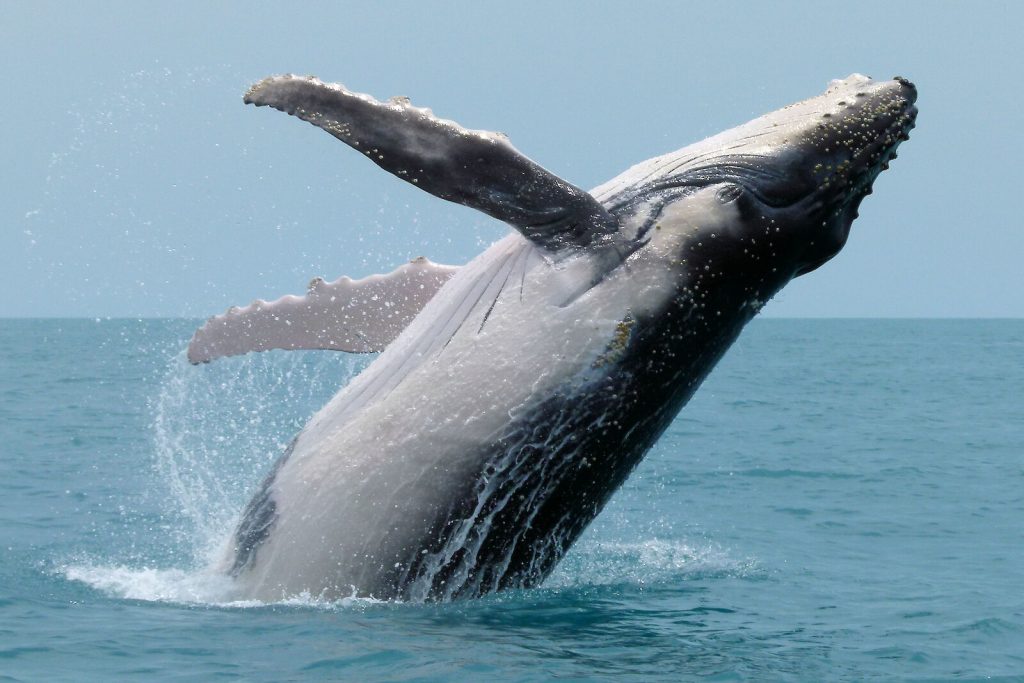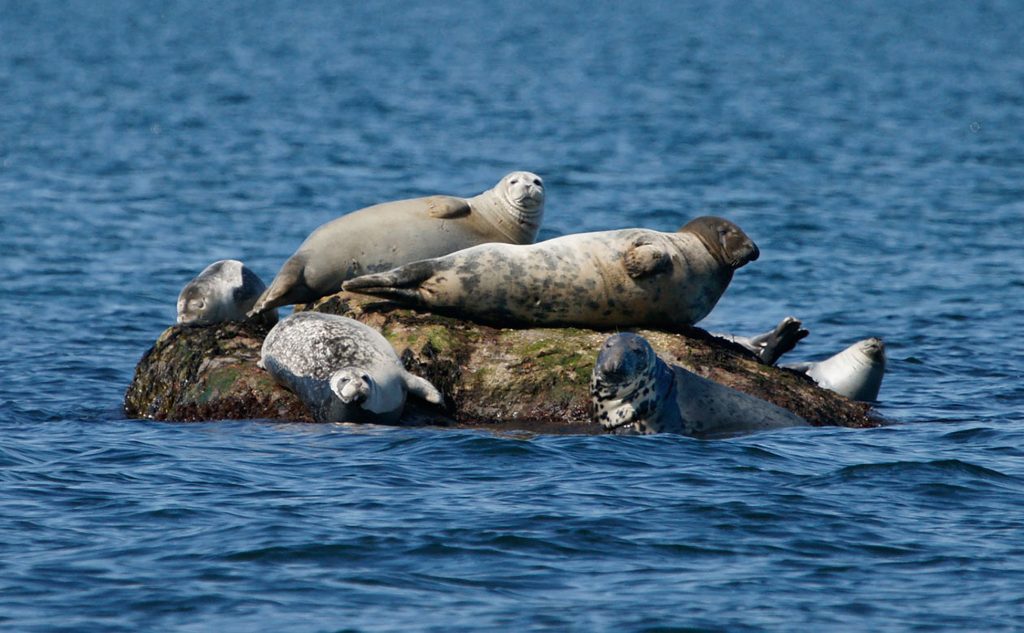
From the Jersey side of the New York Bight, along the Long Island Coast, Montauk Point, the shores of Block, Nantucket and Martha’s Vineyard, and into the Sound, as every year goes by, we have been privileged to see the resurgence of ocean mammals. This rebound seemed unimaginable a generation ago.
The fact that these mammals are returning has much to do with efforts to make a more sustainable and healthier environment along our coasts. These mammals include species called “Cetaceans”, which breathe air, have a lung system, and are warm-blooded. Included are various groupings of whales and dolphins, porpoises and killer whales, which had largely disappeared from our region many years ago.
The great whales were thinned out by overharvesting which began commercially in America in the mid-1600s and ended when there were almost no whales to be had. It’s amazing that in the early 20th century, more whales were killed than the total amount in the four previous centuries. It literally was a blood bath. By the early 1970s, the U.S. Government already had eight species of whales listed on its environmental endangered list. Finally, in 1971, all whaling was outlawed in U.S waters. Many other countries followed suit to protect whales. The only whales to be taken are by indigenous peoples. However, some countries are continuing to whale such as Japan, Norway, and Iceland but are dealing with mounting pressure to end their whaling.

In a half-century of steady whale protection, certain whales began to rebound such as finback, sei, humpback, grey, and baleen. (Baleen whales strain ocean organisms through a mouth strainer to eat). Occasionally, rare right whales, once so populous, return to visit, though they are still in extreme danger of becoming extinct. The largest whales, such as the 100 ft. long blue whale and the toothed sperm whale, are in slightly better shape, still struggling, but slowly rebounding.
One practice helping the return of these giants is the discontinuing of dumping overfilled garbage barges at sea that came from New York City. This was never a credible solution for the refuse of our “Throw-away” society. I remember fishing a veritable ocean of garbage at the BA Buoy and the Bacardi Wreck before the practice finally halted in 1992. Stopping dumping eventually let nature take its course and slowly begin reversing damage incurred to our seawater. Now, if you run your boat out the inlet and beyond, you can see crisp, clear blue water, topped the white foam made by your prop. What a sight!!!!
Along with these larger whales are their smaller cousins. Perhaps you are old enough to remember “Physty” a juvenile white beluga whale that blitzed Long Island’s south shore in 1981. She beached herself at Oak Beach and fortunately was helped back to sea. That spring she was spotted everywhere from Rockaway to Fire Island Inlet where she was finally held in an enclosure until she was healthy enough to venture back to sea. Other smaller whales that presently visit our area are the minke and orca amongst others.
We revel in the increased presence of dolphins and porpoises along our coasts. These species are called “Pinnipeds”. I have seen them swim alongside my grandson surfing and swimming at Fire Island Inlet and swimming up to us while fishing the offshore wreck San Diego this summer. These mammals swim in groups called “Pods” and often can be seen along Jones, Robert Moses and Smith Point Beaches. They visit the Sound along Connecticut’s beach’s and up the Hudson. You can feel safe when you spot them while you are swimming. They are harmless and sharks usually vacate the area when “Pinnipeds” are in an area.

Commercial fishing for these beautiful animals has been outlawed and nets to catch albacore tuna have been modified to reduce the “By-catch” of these species. One controversial issue is the capture, transportation and training of these animals for aquariums and sea adventure shows. Currently, permits can be obtained relegating their capture for this purpose. This issue is extremely controversial as animal rights groups would like it halted. The aquarium parks claim the benefit of education on environmental issues through entertainment. Only time will tell how this plays out.
Meanwhile, another dynamic concerning sea mammals has been in play. For years seals of all types were hunted in Canada, Newfoundland and Greenland. At present, the market for their pelts has been greatly reduced by “The United States Marine Mammal Protection Act” which closed the market for seal pelt sales and use in the U.S.A. It does allow indigenous peoples to hunt them for their own traditional uses. Our northern neighbors have now put quotas on most seal fishing – though this doesn’t help thousands of baby harp seals still being clubbed each year. Hopefully, Canada will come in line on this issue in the near future.
The good thing is that American seal pelt purchase cessation and Canadian quotas are finally bringing harbor, grey and harp seals back to our beaches, inlets, harbors, rivers and into the sound. They are here fall, winter and spring and you can find them on low tide beaches, sunning on rocks and jetties or book a seal watching trip.
What is the reason for this new abundance of whales, dolphins and seals? Large whales consume up to 4,000 lbs. of fish and krill per day. Smaller whales, dolphins and seals eat considerably less but still need a healthy source of protein to keep their interiors warm and build thick layers of fat to endure colder climates when migrating north. Large schools of baitfish have been increasing in our waters. This publication “ Long Island, Connecticut and New Jersey Boating World” championed, along with all the environmentally concerned parties, to keep menhaden (Mossbunker) fishing quotas very low making it unprofitable for the Omega Company to send their “Bunker Fleet” to scoop up all the bunker they can lay their nets on. Their spotter planes would leave no school untouched. For many years the “Bunker Fleet” worked uninhibited in our waters. In addition, the by-catch in their nets harmed all our sea life. Move the line a few years forward and today our waters are filled with giant schools of bunker along with other forage fish for whales, porpoises and seals to feast on. In addition, these large schools have brought in large groups of various sharks and tuna that were previously disappearing. From where we stand, those of us who love the sea, welcome the return of a healthier water environment visited by whales, porpoises and seals. We must be ever vigilant to keep it so.
Our next fight may well be against ocean windmills which will be built by foreign companies, deliver higher-priced electricity, and conflict with our marine visitors, their patterns of life and the impact of our local fishing industry. If we want a healthy ocean, we better do our homework and question everything proposed on this issue, or our sea mammals, fish and even birdlife may disappear. I believe in environmentally sound power alternatives -NOT promises, slanted studies, and business wizardry. I seriously doubt the prudence of this potential enterprise. It’s something you should read up on and decide for yourself.
Article by Mark C. Nuccio
C. 2021 By Mark C. Nuccio- All rights reserved
You can contact the author -mark@designedge.net
